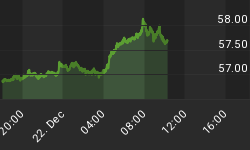Higher Growth Shares Continue To Lag
Leadership in the financial markets speaks to investor conviction. If you want to know where demand is strong, a leadership list is a good place to start. When investors are confident about increasing stock prices, they tend to demand companies with faster growth rates, since the potential return is greater than their more mature blue chip brothers. For example, during the dot-com craze high-flyer Cisco (CSCO) significantly outperformed the Dow Jones Industrial Average (DIA).

The endless stock rally of 2013 was led by small caps and technology stocks, telling us the tolerance for risk was high. Thus far, 2014 is taking on a much more conservative look. From The Wall Street Journal:
U.S. stocks closed broadly lower Tuesday, with declines concentrated in smaller, high-growth stocks and consumer Internet shares. T he Russell 2000 index of smaller-capitalization stocks shed 1.6% to close at the lowest level since Feb. 6. The Russell 2000 has resumed a selloff this month, and is now down 4.8% on the year, compared with a 1% gain in the S&P 500. Frank Cappelleri, sales trader at brokerage firm Instinet, said the resumed weakness in small-cap stocks is weighing down a thinly traded market. "Continued underperformance by the Russell 2000 relative to the S&P 500 is something we can't ignore," Mr. Cappelleri said. "Anytime you have a major part of the market not participating in a rally," it's going to give investors pause, he said. "If you look at the leader board, it's the growth stocks that are getting hit," said Joe Saluzzi, co-head of equity trading at institutional brokerage firm Themis Trading.
Vulnerable Tech Profile
Leadership that has been in place for several months does not change in a session or two. It can take several weeks or months for the change in investor perceptions to show up meaningfully from an intermediate-term perspective. For example, the NASDAQ's 50-day moving average began to show signs of vulnerability in March 2011 (see red arrow on left below). Five months later, the NASDAQ experienced a waterfall plunge in August 2011 (see blue arrow).

How Does The Same Chart Look Today?
The current chart of the NASDAQ looks vulnerable. When the blue 50-day rolls over it tells us the intermediate-term trend is trying to flip from bullish (economic conviction) to bearish (economic fear).

The Wild Card Named Putin

Geopolitical events always bring an extra layer of uncertainty to allocation decisions, especially those that are taking place several time zones away. Traders and money managers do not like overnight or weekend exposure during acute phases of conflicts, similar to what is taking place between Russia and Ukraine now. From Reuters:
Traders also kept an eye on developments in Ukraine, where supporters of Russia and of a united Ukraine are accusing each other of tearing the country apart. The former Soviet republic is sliding toward war. "The short-term issue is Ukraine. We don't know when we'll wake up one morning and (Russian President Vladimir) Putin is going to be in eastern Ukraine," said Jack De Gan, chief investment officer at Harbor Advisory Corp in Portsmouth, New Hampshire.
Investment Implications - Shorter Leash For Risk
Taken in isolation is a vulnerable NASDAQ chart a reason to reduce equity risk? No, in fact nothing taken in isolation in the financial markets is significant enough to call for radical reactions. However, when the weight of the evidence, from multiple sources, begins to align in a "pay closer attention" manner, it means the odds of something bad happening in the stock market are increasing. We have been watching the Dow's sideways and indecisive action since April 4. The current version of the chart (below) is still concerning.

As noted in this week's video, our response to the current and less attractive outlook for stocks is a diversified mix of equities (SPY), bonds (TLT), and cash. TLT has helped this week; it is beating the S&P 500 by 0.51% over the last two sessions. If conditions continue to deteriorate, we are prepared to take additional steps to beef up our stock-correction shelters.















